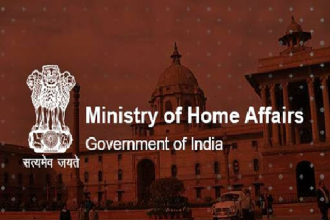Srinagar, July 29: The Ministry of Home Affairs informed the LokSabha on Tuesday that the Government of India has adopted a comprehensive, multi-dimensional strategy to tackle internal and cross-border terrorism in Jammu and Kashmir. The approach focuses on enhanced security deployment, intelligence coordination, financial crackdowns, and legal enforcement.
In a written reply, Minister of State for Home Affairs NityanandRai emphasised the Centre’s “zero-tolerance” policy towards terrorism, particularly in sensitive regions like Jammu and Kashmir. These measures are being implemented in close coordination with the Union Territory administration, security forces, and intelligence agencies.
To bolster internal and border security, the Centre has deployed additional Central Armed Police Forces (CAPFs) and reinforced the counter-insurgency grid. Surveillance capabilities have been scaled up using drones, UAVs, satellite imagery, and thermal sensors under the Comprehensive Integrated Border Management System (CIBMS), now operational along vulnerable stretches of the Line of Control (LoC) and International Border.
Other initiatives include intensified day-and-night domination, construction of strategic roads, tunnels, border outposts, and round-the-clock checkpoints at critical points across the region. Joint patrolling and enhanced coordination with neighboring countries aim to secure cross-border routes.
Internally, sustained operations by CAPFs, the Indian Army, and J&K Police seek to dismantle terror networks. Preventive measures and targeted investigations by the National Investigation Agency (NIA) focus on identifying and neutralizing strategic supporters of terrorism.
To disrupt terror financing, the government has institutionalized dedicated units—the Combating Financing of Terrorism (CFT) Cell in the Ministry of Home Affairs and the Terror Funding and Fake Currency (TFFC) Cell within the NIA. These bodies collaborate with financial intelligence units to monitor suspicious transactions, hawala operations, and NGO-linked funding.
Legal deterrence has been strengthened through amendments to the Unlawful Activities (Prevention) Act (UAPA) and expanded jurisdiction for the NIA, enabling more effective prosecution of terrorists and proscribed organizations linked to Jammu and Kashmir.
The Ministry also highlighted the deployment of Artificial Intelligence, Big Data Analytics, and Facial Recognition technologies to detect and disrupt terrorist networks. Continuous monitoring of social media and cyberspace helps prevent radicalization, recruitment, and online propaganda.
Intelligence gathering has been enhanced via a synchronized network comprising the Multi-Agency Centre (MAC) at the national level and State Multi-Agency Centres (SMACs) in Jammu and Kashmir. Real-time information sharing, joint command centers, and better coordination between intelligence agencies and ground forces have led to several preemptive successes.
Finally, the government underscored its commitment to international cooperation, engaging with 26 countries through Joint Working Groups on Counter-Terrorism and participating actively in multilateral forums such as the United Nations, BRICS, BIMSTEC, ASEAN, and QUAD.










